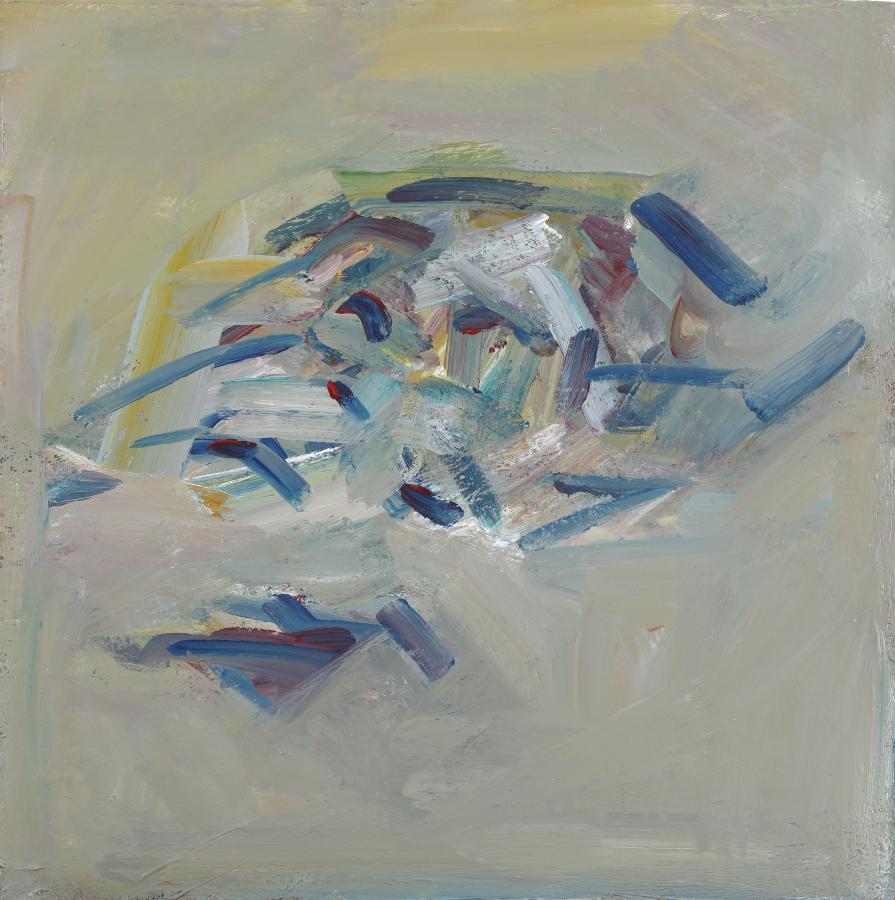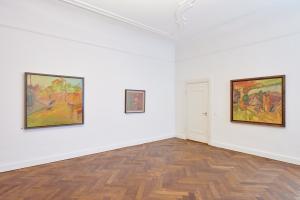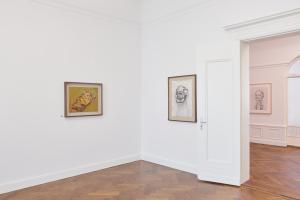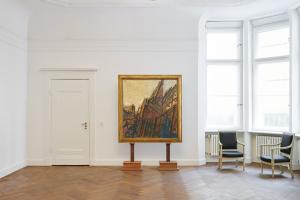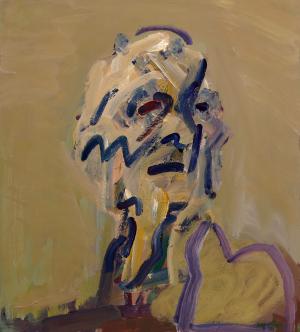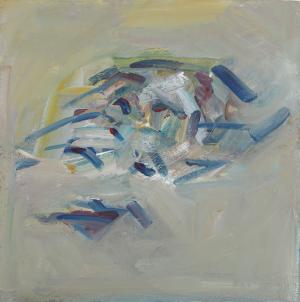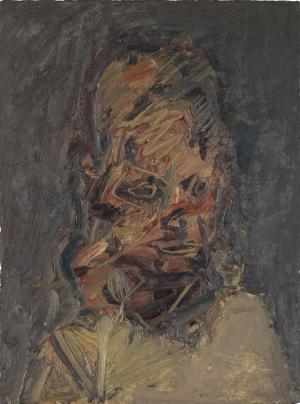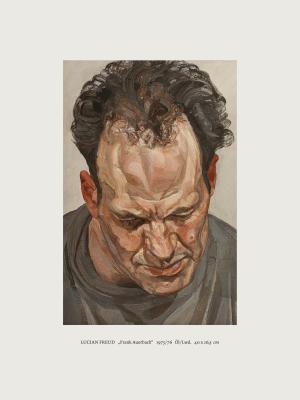Frank Auerbach takes place in collaboration with the Frank Auerbach Estate and the Frankie Rossi Art Projects. The exhibition opens to the public on May 2, 2025 and will be on view until June 28 of that year. The exhibition will be accompanied by a catalog with texts by Catherine Lampert, Matthew Holman, Danièle Cohn and Johanna Adorján.
Official Trailer - Frank Auerbach: Life and Death by Jake Auerbach, Premiere 03.05.2025, Berlin
Press:
The Guardian, 15.01.2025, ‘Homecoming’ show for artist Frank Auerbach to be held at Berlin gallery
Blau International No. 12, Berlin`s bow to a lost son
Texte zur Kunst, 28.04.2025, Frank Auerbach Nachruf
taz, 29.04.2025, Wie innere Landschaften
the art newspaper, Podcast, Frank Auerbach’s Berlin homecoming, human remains and museums, Ian Hamilton Finlay’s ‘Republic’
radio3 RBB, 30.04.2025, Gallery Weekend ein Überblick
radio3 RBB, 02.05.2025, Gallery Weekend, Silke Hennig über die Ausstellung Frank Auerbach
Tagesspiegel, 02.05.2025, Mit sieben floh der Maler Frank Auerbach vor den Nazis: „Ich wünschte nie, ich hätte Eltern“
FAZ, 03.05.2025, Kunstmarkt - Alterswerke und Neuanfänge
Welt, 03.05.2025, „Frank hat eigentlich immer gemalt“
The Observer, 04.05.2025, ‘He wasn’t scared of dying’: Jake Auerbach on his painter father, Frank
Another Magazine, 06.05.2025, Brilliant Things to Do This May
Dazed Magazine, 08.05.2025, Reflecting on the ‘mystical’ process of Frank Auerbach’s captivating art
Süddeutsche, 09.05.2025, Das wurde Zeit
Wallpaper, 19.05.2025, A posthumous exhibition in Frank Auerbach`s home city of Berlin
monopol, Juni Ausgabe, Review Frank Auerbach
Berliner Morgenpost, 01.06.2025, Frank Auerbachs späte Rückkehr nach Berlin
studio international, 30.05.2025, Britain’s greatest postwar painter has a belated German homecoming, which captures the remarkable presence of his work
Press release
FRANK AUERBACH
May 3 through June 28, 2025
Galerie Michael Werner is delighted to present the exhibition Frank Auerbach, a comprehensive retrospective that covers over six decades of work and brings together paintings and drawings by the German-born British painter Frank Auerbach (1931–2024). Moreover, it is both the first exhibition on the renowned artist following his death last year and also the very first in the city he left in 1939, when his parents saved him from Nazi persecution by sending him to England.
In 1963, Michael Werner opened his first gallery in Berlin featuring works by Georg Baselitz. In the fall of that same year, Werner and Baselitz traveled to London and visited Auerbach’s solo exhibition at the Beaux Arts Gallery. The paintings that were on show there form the bedrock of the present exhibition. At the time, Auerbach was already focusing on the themes that were to occupy him for the rest of his life, namely a relentless exploration of the human figure and the urban world as painterly terrain. His images of London’s urban fabric are inextricably bound up with his studio in Mornington Crescent, where he worked from 1954 until his death 70 years later. From the 1980s onwards, he concentrated on a narrow circle of recurrent sitters, among them his son Jake and his wife Julia. Auerbach’s painting was a process of permanent revision. His artistic starting point was always his dissatisfaction, his tussling with a truth that could not, in the final instance, be pinned down. Every image was a dialectical movement consisting of creation and destruction. After each session, Auerbach scraped the still moist paint off the canvas or wooden panel, a kind of negation that gave him an opportunity to start afresh the next day. He compared this method to rehearsing a theater play. Only through repetition, he suggested, did the certainty arise which first enables improvisation. German philosopher Helmuth Plessner spoke in this context of an image proposal, a concept that describes the close link between the represented and the representation. That said, Auerbach’s art goes even further. In his paintings, the face is not merely surface, but a form of social presence, a mirror of the existential condition. Here, the human figure is not juxtaposed to the world, but embedded in it, inextricably bonded with the material of painting. “It is very important to me that I know the person I am painting really well and not for some sentimental reason,” Auerbach once said. “The better you know a person, the more details you recognize in him or her … You then notice structures and unusual connections that had previously escaped you … It is very helpful to have a better and more complex sense of what is true and what is not.”
This radical familiarity with his sitters enabled Auerbach to lend his portraits immense formal concentration. In the 1980s and 1990s, his paintings achieved a dramatic expressivity. The paint towered up, becoming substantive in itself, the archaic trace of an intense, almost sculptural painterly process. Towards the end of the 1990s and in the early noughties, his work once again became more detached, the painting less dense, the brushwork freer, the compositions revealing a new, shimmering translucence. Especially in his late portraits, his formal intention emerges with great clarity.
The exhibition was curated by renowned art historian and long-standing director of the Whitechapel Gallery, Catherine Lampert, who has not only worked intensively on Auerbach, but also sat for him as a model for decades. The exhibition combines major works on loan from public and private collections, including incisive self-portraits from the last decade of his life and works that he produced in the years immediately before his death in November 2024. Auerbach himself welcomed the exhibition and the fact that his work was now going to go on show in Berlin. For his painterly cosmos essentially revolved around one central question: How to capture the fleeting, the face, time in color and shape, without betraying it? His images are not representations but concentrations of experience, they are both mask and mirror at once. In them, we can see the paradox truth of painting revealed, namely that a picture can both reveal and conceal.
Frank Auerbach’s oeuvre is represented in countless public collections, including: the British Museum, London; the Hepworth Wakefield, Yorkshire; the Louisiana Museum of Modern Art, Humlebæk; the Metropolitan Museum of Art, New York; the Städel Museum, Frankfurt am Main; and the Tate Gallery, London. In 1978, the Arts Council hosted a retrospective of his work at the Hayward Gallery, London. Auerbach had a solo show in the British pavilion at the 1986 Venice Biennale where, together with Sigmar Polke, he won the Golden Lion. In 2015, a major retrospective of his oeuvre was held at Kunstmuseum Bonn before moving on to the Tate Britain in London.
Catherine Lampert is a freelance curator and art historian. From 1988 to 2001, she was director of the Whitechapel Gallery, London and on behalf of various public galleries devised exhibitions on artists as diverse as Auguste Rodin, Honoré Daumier, Rosemarie Trockel, and Francis Alÿs. In 2014 she co-curated Das nackte Leben, an exhibition on close-to-life post-war British art from 1950 to 1980 for LWL-Museum für Kunst und Kultur in Münster. She has written extensively on Euan Uglow (2007, 2024), Paula Rego (2019), Peter Doig (2011, 2023), Hurvin Anderson (2022), and Frank Auerbach (2015). She co-authored Lucian Freud: Catalogue Raisonné of the Oil Paintings (2025).
Frank Auerbach is being held in collaboration with the Frank Auerbach Estate and Frankie Rossi Art Projects. The private view of the exhibition will be on May 2, 2025, and the show will run through June 28 of this year. The exhibition is accompanied by a catalogue with texts by Catherine Lampert, Matthew Holman, Danièle Cohn and Johanna Adorján. Opening hours are Tuesday to Friday, 11 a.m. – 6 p.m., and Saturday, 10 a.m. – 4 p.m.
In honor of this exhibition, Galerie Michael Werner will also host the premiere of filmmaker Jake Auerbach’s new film FRANK AUERBACH: life and death at filmkunst66, Bleibtreustraße 12, 10623 Berlin, on Saturday 3 May 2025 at 11 a.m. A Q&A session with Jake Auerbach will follow the screening. Please RSVP to rsvp@michaelwerner.com, as space is limited.
Follow Galerie Michael Werner on Instagram.
